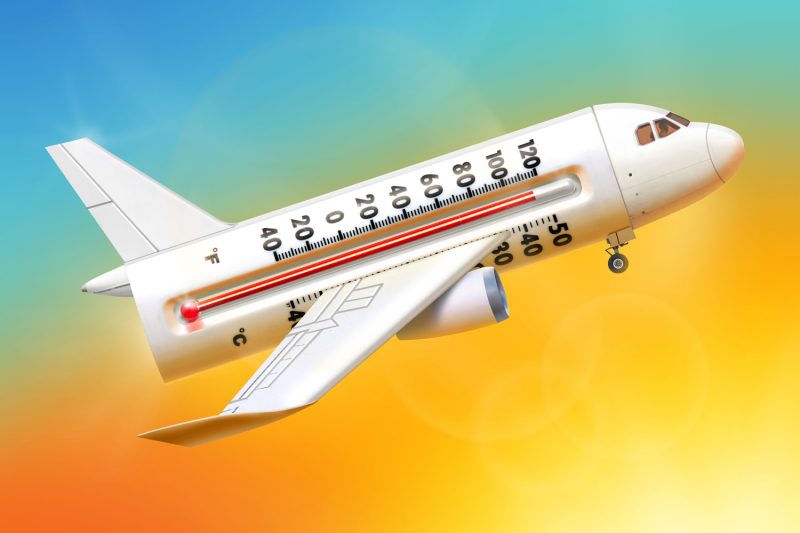**Effects of Extreme Heat on Air Travel**
Extreme heat is becoming a major cause of concern for airline operators and airports worldwide. While this environmental challenge is often overlooked in discussions about air travel, its impact on the industry cannot be underestimated. Airlines and airports are facing several challenges due to rising temperatures, and they are actively seeking solutions to mitigate its effects.
Airlines are experiencing difficulties in maintaining operational efficiency during periods of extreme heat. High temperatures can affect aircraft performance, especially during takeoff and landing. As the air temperature rises, the air density decreases, which reduces engine power and lift generation. This can result in longer takeoff distances, higher fuel consumption, and decreased payload capacity. In some cases, airlines may need to reduce the number of passengers or cargo on board to ensure safe operation of the aircraft.
Moreover, high temperatures can also affect the air conditioning systems of aircraft, leading to discomfort for passengers and crew members. In extreme cases, overheating of the cabin can pose health risks and compromise safety. To address these challenges, airlines are investing in advanced cooling systems and conducting rigorous maintenance checks to ensure the reliability of their aircraft under extreme heat conditions.
Airports are also facing challenges in coping with rising temperatures. Runways made of asphalt can absorb and retain heat, causing them to become soft and less resistant to heavy aircraft landings. This can lead to runway closures or restrictions on aircraft weight limits, causing delays and disruptions in flight schedules. Additionally, extreme heat can affect the performance of ground support equipment and infrastructure, such as fueling systems and baggage handling facilities.
To combat the effects of extreme heat, airports are implementing various measures to enhance their resilience. Some airports are using innovative cooling technologies, such as reflective surfaces and vegetation, to reduce heat absorption and create a more comfortable environment for passengers and staff. They are also exploring sustainable energy sources, such as solar power, to reduce their carbon footprint and mitigate the impact of climate change on air travel.
In conclusion, extreme heat is posing significant challenges for airlines and airports, impacting their operations and services. As global temperatures continue to rise, the aviation industry must adapt and innovate to ensure the safety and efficiency of air travel. By adopting sustainable practices and investing in resilient infrastructure, airlines and airports can mitigate the effects of extreme heat and create a more sustainable future for the industry.


























